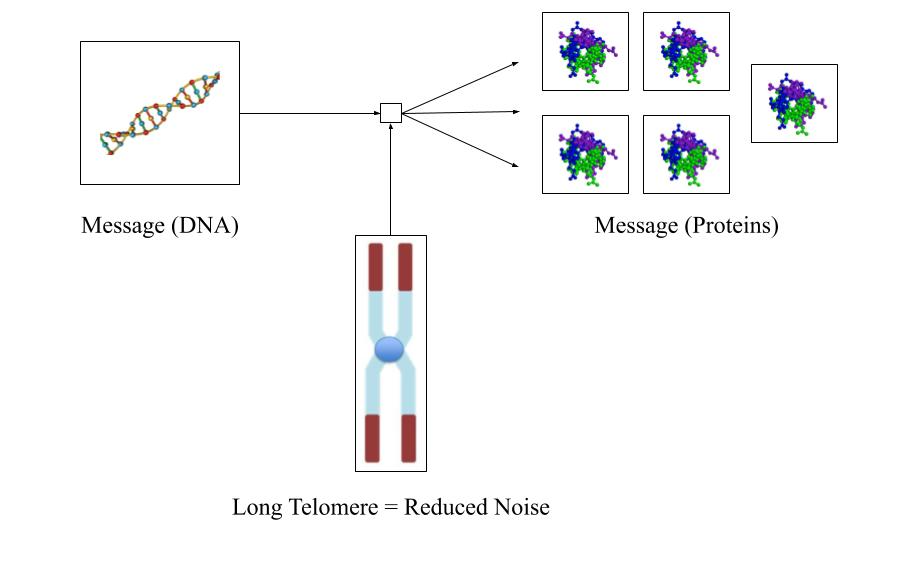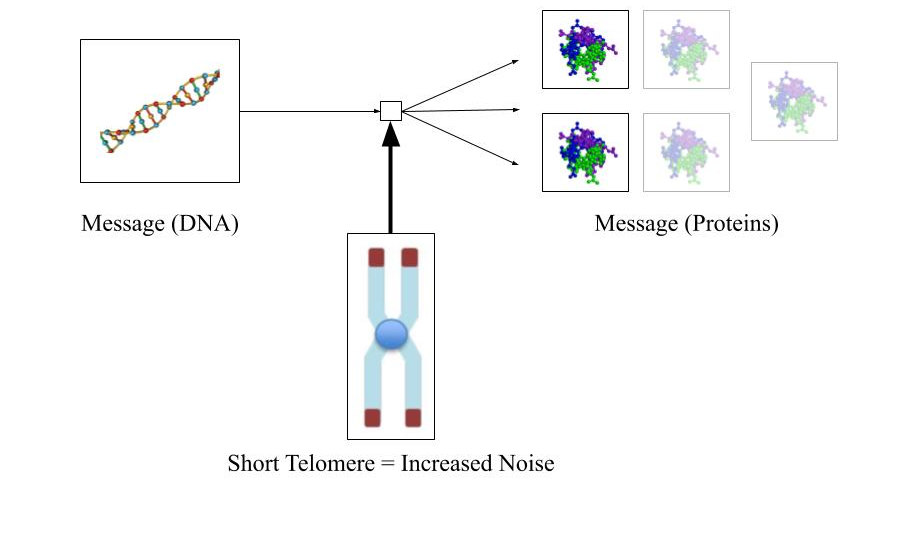Viewing Aging as Noise in a Communication System
Recently, thanks to a recent article by Yang, J. H. [1] I discovered a good analogy of aging with the Shannon diagram depicted in The Mathematical Theory of Communication, dating back in 1948.

In this diagram basically there is a source of information that is encoded into a signal and then transmitted to the receiver, with the downside of having a noise component that alters the signal.
This could be a good analogy with aging, since what differentiates a young cell with an old cell is not the information source, but its noise component, which is way bigger in an old cell. Both a young and an old cell have virtually the same genome, the difference between them is epigenetic, meaning that an old cell has a different pattern of gene expression, which results in the cell losing its identity and not behaving as it should.
What is this noise source? The best chance is to look at our telomeres, the shorter the telomeres are for a given cell, the biggest noise it produces, altering the gene expression. This effect has been named TPE or Telomere Position Effect [2].
Case 1: Long Telomeres

Case 2: Short Telomeres

In the above example we can see that an altered gene expression results in a reduced number of collagen proteins, and hence contributing to skin aging.
This is all an oversimplification but good for explaining aging to non scientists:
Aging is not just wear and tear, in fact our cells have been around for billions of years. In a living organism if we are able to reduce the noise source, in this case resetting telomere length, we will again have an unaltered signal and young cells. Is that simple? Soon we will see how this goes in humans 🤷, it has already been proved right in mice 🐭🐭.
[1] Yang JH, Griffin PT, Vera DL, Apostolides JK, Hayano M, Meer MV, et al. Erosion of the Epigenetic Landscape and Loss of Cellular Identity as a Cause of Aging in Mammals. 2019;
[2] Robin JD, Ludlow AT, Batten K, Magdinier F, Stadler G, Wagner KR, et al. Telomere position effect: regulation of gene expression with progressive telomere shortening over long distances. Genes & Development. 2014;28(22):2464–76.